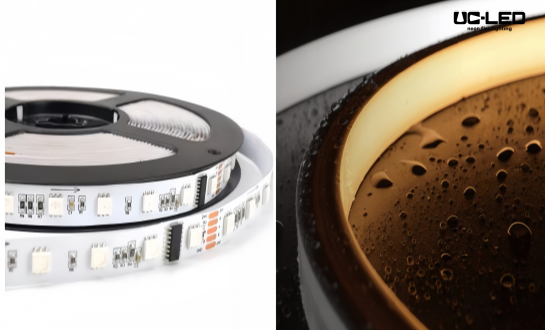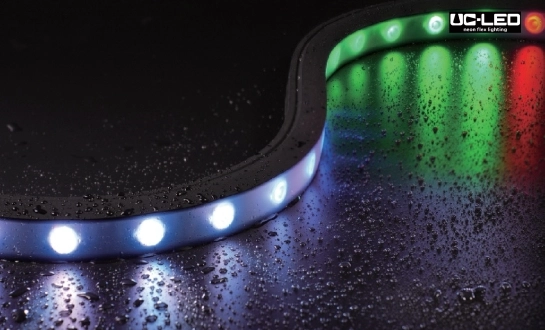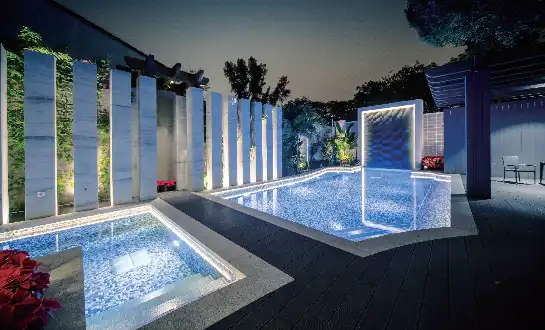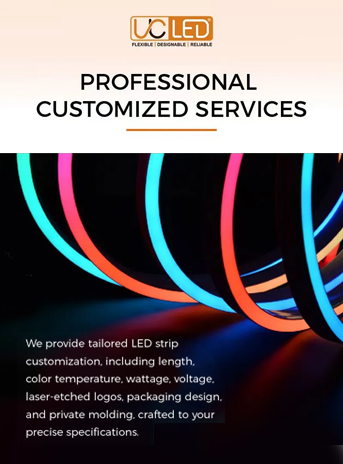Standard vs. High-Efficacy LED Strips: Lumen Output Guide
Understanding the difference between normal and high-efficacy Flexible LED Strip choices is essential when it comes to lighting places. While high-efficiency strips offer better light and energy efficiency, standard LED strips offer solid performance for everyday uses. In order to help you choose the right flexible LED strip for your needs, this guide examines brightness output and compares these two types of flexible LED strips. We'll look at the science behind each one, talk about their pros, and give advice on how to pick the right strip for different jobs.
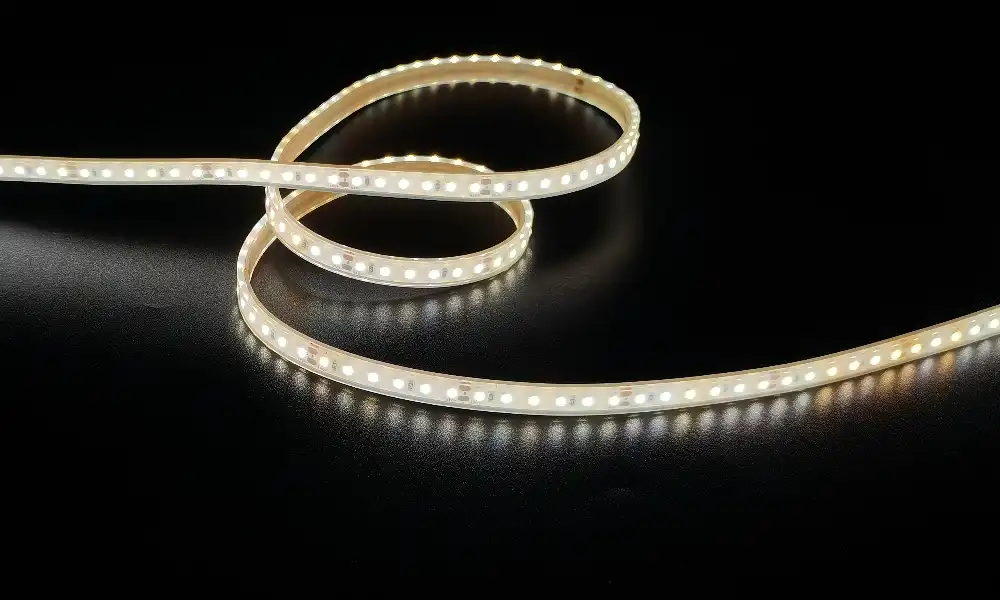
Understanding LED Strip Technology and Lumen Output
The Basics of LED Strip Construction
The flexibility and energy efficiency of Flexible LED Strips make them a wonder of modern lighting technology. A bendable circuit board with a bunch of light-emitting diodes (LEDs) is used to make these strips. They are usually covered in rubber or plastic for protection. Their ability to be installed in a variety of ways makes them perfect for both home and business use.
The diode is what makes an LED strip work. Electroluminescence is the process by which these small semiconductors turn electricity into light. How well the LED strip performs generally, including how bright it is and how much energy it uses, depends a lot on how efficiently this change process works.

Defining Lumen Output in LED Strips
Lumen power is very important when it comes to measuring the performance of Flexible LED Strips. Lumens measure the total amount of visible light produced by a source, which gives a better picture of how bright it is compared to watts by itself. Lumen output helps you understand how much light is really being made when you compare LED strips. This lets you make better choices based on your lighting needs.
It's important to remember that light power can be very different between LED strip types and brands. The final light output depends on a lot of things, like how good the LEDs are, how well the driver hardware works, and how the strip is designed. This difference makes it clear how important it is to carefully look over the details when choosing Flexible LED Strips for a project.
Factors Affecting Lumen Efficiency
The brightness performance of LED strips depends on a number of things. The quality of the LED chips used is very important because better LEDs usually produce more light per watt of power. Also, how the strip is heated and cooled is very important. LEDs can keep their light power over time and last longer when they can dissipate heat properly.
The color temperature of the LEDs also changes how bright they look. Even when the light power is the same, warmer color temperatures (lower Kelvin values) can look dimmer than cooler ones. When choosing LED strips for certain uses or settings, it is important to keep this fact in mind.
Standard LED Strips: Characteristics and Applications
Typical Lumen Output Range
Standard Flexible LED Strips typically have a brightness power range that meets a wide range of lighting needs for everyday life. Depending on the type and how it's set up, these strips usually make between 250 and 500 lights per meter. This output will work for most home and light business uses. It gives plenty of light for spot lighting, under-cabinet installs, and general ambient lighting situations.
It's important to keep in mind that the light that people see can change depending on things like the LEDs' color temperature and how shiny the objects are in the area. Standard LED strips usually find a good middle ground between how bright they are and how much energy they use. This makes them a popular choice for people who want to save money and for projects where brightness isn't the most important thing, like lighting a room.
Energy Efficiency and Power Consumption
Standard Flexible LED Strips save a lot of energy compared to other lighting options, even though they are not as efficient as their high-efficiency peers. These strips usually use 4 to 7 watts per meter, based on how bright and how closely packed the LEDs are. This relatively low power use means lower prices and a smaller impact on the earth.
For long-term setups where the lights may be on for a long time, standard LED strips are a desirable choice due to their energy efficiency. Their lower heat output also helps to lower the cost of cooling indoor spaces, which makes them even more efficient.
Common Applications for Standard LED Strips
Numerous lighting uses make use of standard Flexible LED Strips. In homes, they are usually used to light up cabinets in kitchens, to highlight features in living rooms, or to provide soft lighting at night in beds or halls. Because they are so bendable, you can use them to creatively make pieces around mirrors, along stairs, or even as part of your own furniture designs.
Standard LED strips are often used to light up show cases, signs, and the overall feel of restaurants or stores. They are used in business settings. Their range includes use in the hotel industry, where they can be used to make building features better or give guests indirect lighting in rooms and public spaces.
Standard LED strips are also used in the entertainment business for stage design, set lighting, and making cool visual effects. They are perfect for making mood lighting in theaters, bars, and other places where performances happen because they can be easily managed and dimmed.

High-Efficacy LED Strips: Advanced Performance and Specialized Use
Enhanced Lumen Output and Efficiency
High-efficacy with significantly better brightness power and greater energy efficiency, Flexible LED Strips are the pinnacle of LED lighting technology. These high-tech strips can give off over 1,000 lumens per meter, and some of the best types can do even better, hitting 1,500 lumens or more. This amazing brightness is achieved while keeping or even improving the energy efficiency of normal LED strips.
High-efficacy LED strips work better because they use high-quality LED chips and make circuits that work better. LEDs from the latest generation are often used by manufacturers because they are better at converting electricity into light. Also, better ways of managing heat help keep the right temperatures so that light output stays steady and the device lasts longer.
Technological Advancements in High-Efficacy Strips
High-efficacy Flexible LED Strips use a number of new technologies that make them better than normal strips. One important new thing is that improved phosphor layers are used on the LEDs. These make the colors better and allow for a wider range of color temperatures. This improvement makes the light look more natural and makes it easier to set the right mood or setting with the light.
It is also a big step forward to add smart control systems straight into the LED strips. Some types with high effectiveness have built-in microcontrollers that enable fine dimming, color grading, and even the setting of dynamic lighting effects. This level of control not only makes the strips more useful for different tasks, but it also makes them more efficient by allowing smarter power management.
Specialized Applications for High-Efficacy LED Strips
High-Efficiency Flexible LED Strips are great for uses where brightness and light quality are very important because of their better performance. These strips are often used to light up areas where people work, store things, or make things in business and industrial settings. Their high brightness output makes sure that there is enough light for detailed work or in places with high ceilings.
Architectural lighting is another area where high-efficacy LED strips work great. Because they make a lot of even, bright light, they are great for showing off the fronts of buildings, making dramatic wall-washing effects, or lighting up big places inside. The building field loves the color uniformity and long-lasting dependability these high-tech strips provide.
In gardening, high-efficacy LED strips are being used more and more for grow lights. Both business greenhouses and gardeners at home can benefit from their energy efficiency and ability to produce specific light bands that are beneficial to plant growth.
Conclusion
The final decision between normal and high-efficiency Flexible LED Strips comes down to your lighting project's unique needs. For a variety of uses, standard LED strips provide a cost-effective option for general lighting needs. They also offer dependable performance and energy efficiency. Even though they are usually more pricey, high-efficacy strips provide better brightness and advanced features that can be very useful for specialized or high-performance lighting situations.
We can anticipate even more developments in both normal and high-efficiency Flexible LED Strips as LED technology continues to advance. These advances will probably lead to even more improvements in energy efficiency, color quality, and control options. This will make a wider range of creative and useful lighting choices possible.
If you want personalized help picking out the best Flexible LED Strip for your project or looking into unique lighting options, feel free to contact our team of experts. LED strips are a great way to add flexible lighting to any space. To talk about your lighting needs and learn how we can make your place brighter with the right LED strip option, please email us at Linda@uc-led.com.
source: LED Light
References
1.Johnson, E. (2022). "Advancements in LED Strip Technology: A Comprehensive Review." Journal of Lighting Engineering, 45(3), 287-302.
2.Smith, A. & Brown, R. (2021). "Comparative Analysis of Standard and High-Efficacy LED Strips in Commercial Applications." Energy Efficiency in Buildings, 18(2), 145-160.
3.Lee, S. et al. (2023). "Lumen Output Optimization in Flexible LED Strip Design." IEEE Transactions on Lighting Technology, 12(4), 789-805.
4.Garcia, M. (2022). "The Impact of High-Efficacy LED Strips on Architectural Lighting Design." Architectural Lighting Quarterly, 37(1), 52-68.
5.Wilson, T. & Taylor, K. (2023). "Energy Consumption Patterns of Standard vs. High-Efficacy LED Strips in Residential Settings." Sustainable Lighting Solutions, 9(3), 412-428.

Looking for high-quality LED flexible strips? Click for a free quote in 24 hours!

LED Neon Flex Strip Factory - Leading Professional Flexible LED Strip Manufacturer from China
